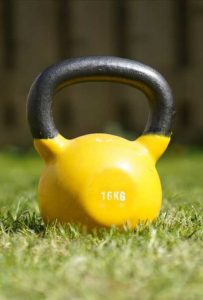Being active and is an effective way to keep your weight in a healthy range, strengthening heart muscles and keep arteries protected from high cholesterol, high sugar and high blood pressure problems which are the reasons for the heart attack and stroke.
Heart needs to be stronger in need to deliver blood more efficiently throughout the body and heart muscle strength can be improved with regular exercise. Regular exercises can lower resting heart rate and improve stress management.
It is recommended for normal adults to do 30 minutes of moderate-intensity exercise at least 5 days a week, or at least 20 minutes of vigorous-intensity physical activity 3 days a week to maintain a healthy body. The heart will benefit from any sort of physical exercise but there may be some specific activities that are more beneficial than others.
Aerobic Exercise
Benefits: Aerobic exercise improves circulation, which helps to lower blood pressure and heart rate. It improves your heart’s capacity to pump blood more efficiently. It reduces your risk of type 2 diabetes.
Brisk walking, running, jogging, swimming, cycling, playing tennis, jumping rope and biking are some examples of aerobic exercise. Choose a low-impact activity like swimming or walking if you have joint problems or other issues.
How much: Ideally, at least 30 minutes a day, at least five days a week.


Strength Training (Resistance training)
Benefits: Strength training as the name suggests has more to do with the body’s composition. It reduces fat and creates leaner muscle mass instead. Unnecessary fat is a risk factor for heart disease. Combining strength training with aerobics may give good results in maintaining cholesterol.
Use your own body weight or resistance bands or weights for this.
Body-strengthening exercises such as push-ups and squats are good examples. You can work out with dumbbells, hand weights or other forms of weight machine under a qualified trainer.
How much: At least 2-3 days per week of resistance training is good. Allow your muscles to recover for a day between sessions by doing it on alternate days.
Stretching and Balance
Benefits: Flexibility workouts such as stretching doesn’t directly contribute to heart health however they provide a good foundation to perform other exercise more effectively. They make our bodies more flexible and keep it free from joint issues, cramping and other musculoskeletal issues.
Flexibility is essential to be able to perform aerobics and resistance training which will eventually help your heart. Flexibility and balance type of exercises help to improve stability and prevent falls, especially in older adults.
You can choose from basic stretching, yoga or Tai chi whichever suits you.
How much: Every day and before and after other exercises as a warm-up session.

If you have been told you have heart-related issues or you think you may have heart disease, check with your doctor before starting an activity program and choose wisely. Join a supervised class by a trained professional to make sure you gain full benefits and not harm your body.







